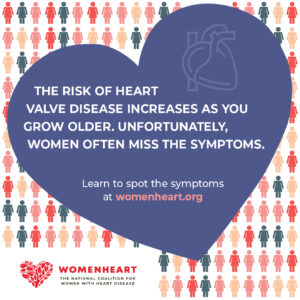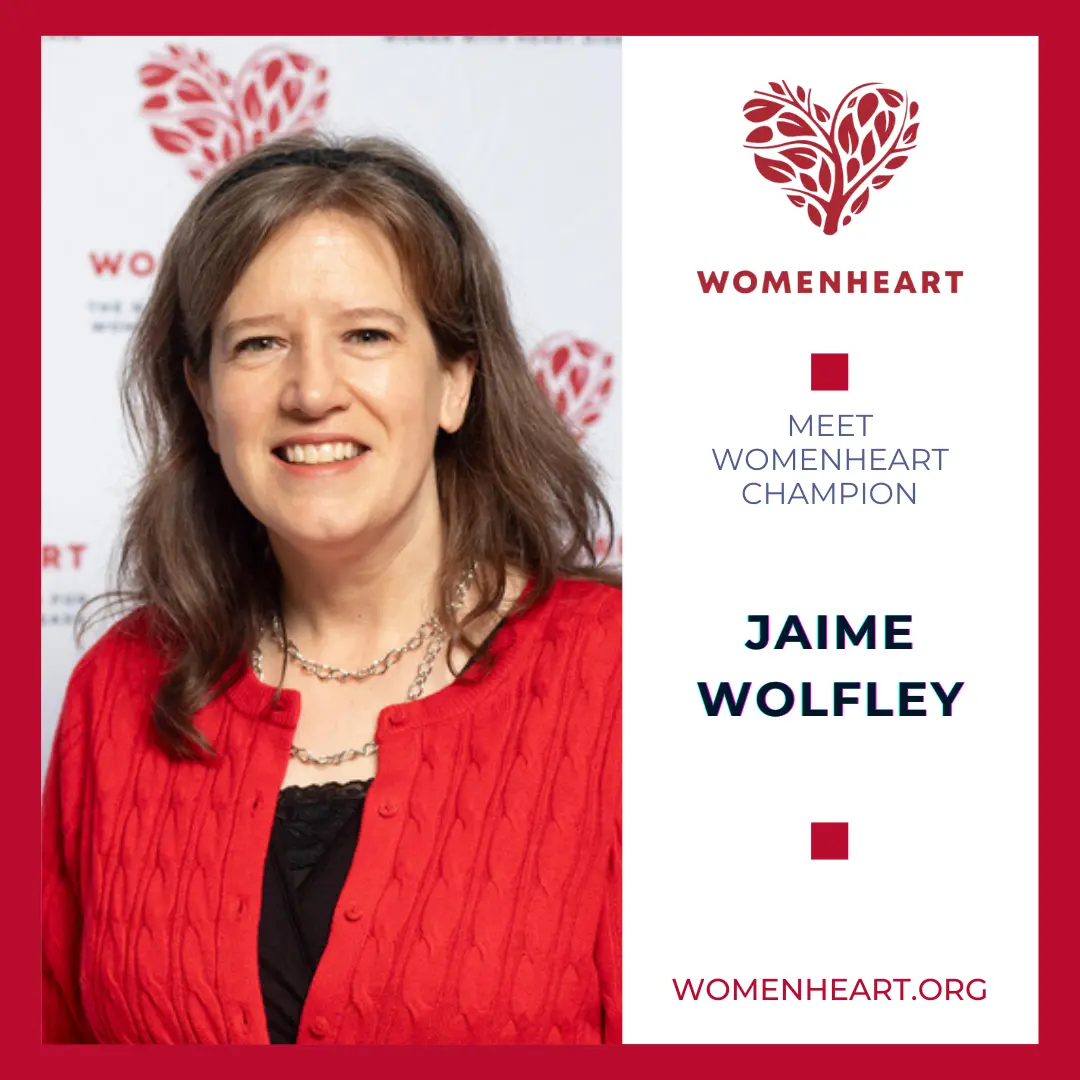 The prevalence of heart valve disease is rising. Yet, women – and especially women of color – are more likely than men to go undiagnosed, and therefore have lower rates of referral, specialist visits and treatment.
The prevalence of heart valve disease is rising. Yet, women – and especially women of color – are more likely than men to go undiagnosed, and therefore have lower rates of referral, specialist visits and treatment.
In 2020, WomenHeart engaged Dr. Rachel Bond and NHA member Dignity Health to help answer why women experience under-diagnosis and under-treatment for heart valve disease. They surveyed patients and clinicians to understand a woman’s journey with valvular disease. Here’s some of what they found[i]:
- Approximately half (52%) of the women surveyed revealed that they had experienced heart valve disease symptoms prior to diagnosis but had ignored them or attributed them to something else.
- Patients felt like they received too little information about their heart care post-treatment, including low rates of participation in cardiac rehabilitation.
- While nearly all clinicians surveyed reported high confidence in treating hypertension and myocardial infarctions, only half (50%) felt confident in managing aortic stenosis and mitral regurgitation and even less expressed confidence with other forms of valvular disease.
- Clinicians understood and agreed that women were under-diagnosed and under-treated for heart valve disease, and over half (58%) felt patients who did not have established, regular health care services were more susceptible to delayed diagnosis.
- Both patients and clinicians agreed that patients should be involved in making decisions about treatment for heart valve disease.
In an October 2019 blog for WomenHeart, Dr. Bond discussed gender disparities in treating women with heart valve disease. She suggested strategies for reducing barriers that lead to such disparities, many of which were reinforced by this research. It’s clear that we must do more to increase awareness of heart valve disease among women, including the signs and symptoms. We also need to provide more education to clinicians, particular primary care providers who are often the first to screen for and identify a potential cardiac condition. Earlier detection and diagnosis can lead to earlier treatment, before the onset of worse symptoms.
Finally, as Dr Bond wrote previously, “from a population standpoint, removing barriers such as access to health care and referral bias may be key.” WomenHeart recently convened experts to discuss missed and delayed diagnosis of heart disease in women, and it was no surprise that a common refrain from women heart patients was that their concerns and symptoms had often been dismissed by doctors who didn’t think they fit the profile of a person with heart disease. When additional barriers, like lack of health insurance or far distance to a health care provider, are also present, the likelihood of delayed diagnosis and treatment for women goes up even more.
On this fifth annual Heart Valve Disease Awareness Day, we must all recommit to ensuring that women are better served and cared for. We must empower them with information to recognize symptoms and risk factors for heart valve disease and to advocate for timely and accurate diagnosis. And we must educate clinicians to understand how heart valve disease presents in women, how to diagnose and treat it, and to ensure that patients are fully engaged in the process of seeking a diagnosis and treatment.
[i] Dr. Rachel Bond and her team are currently working to get the research published. The research was supported by Edwards LifeSciences.




